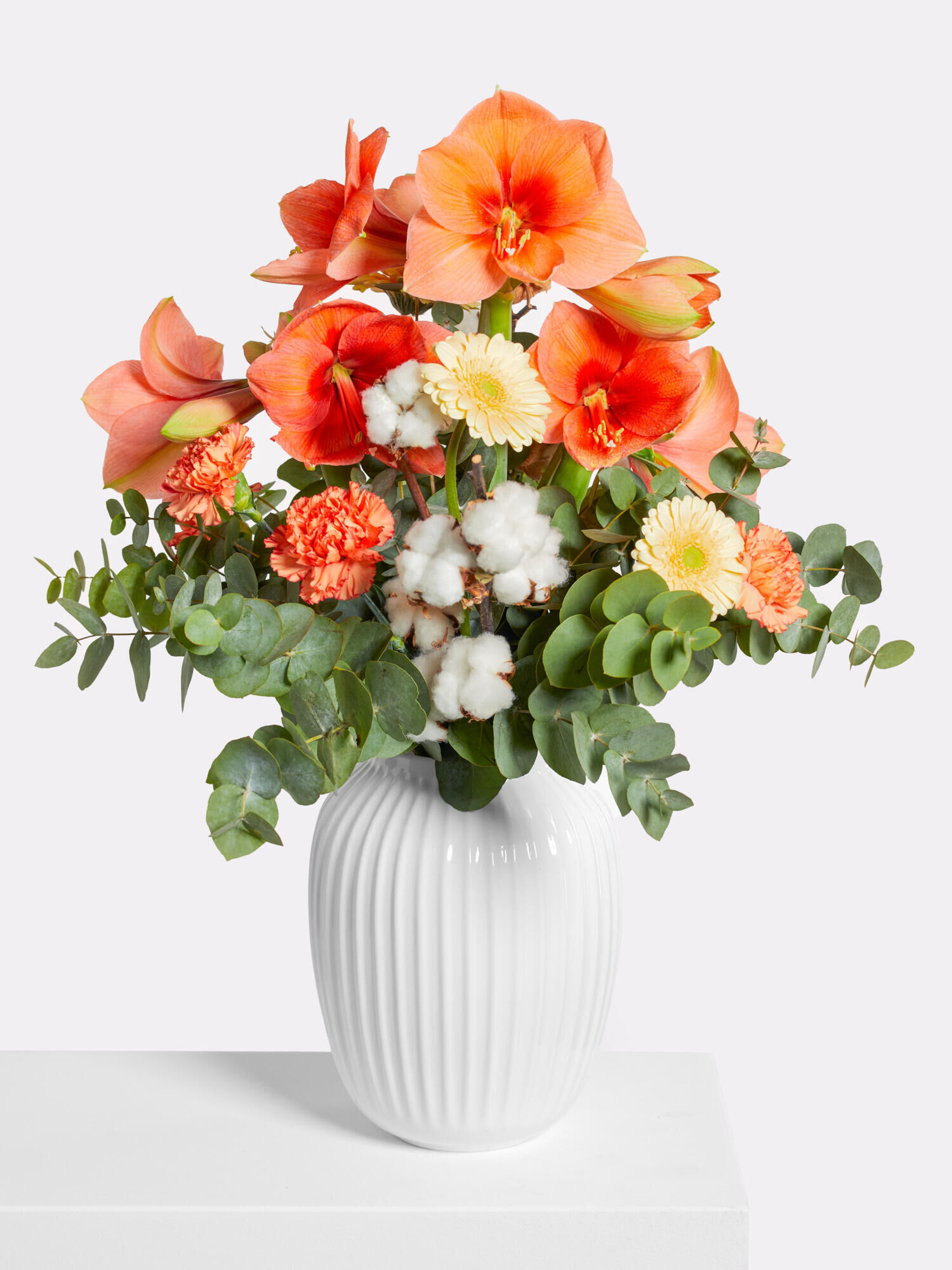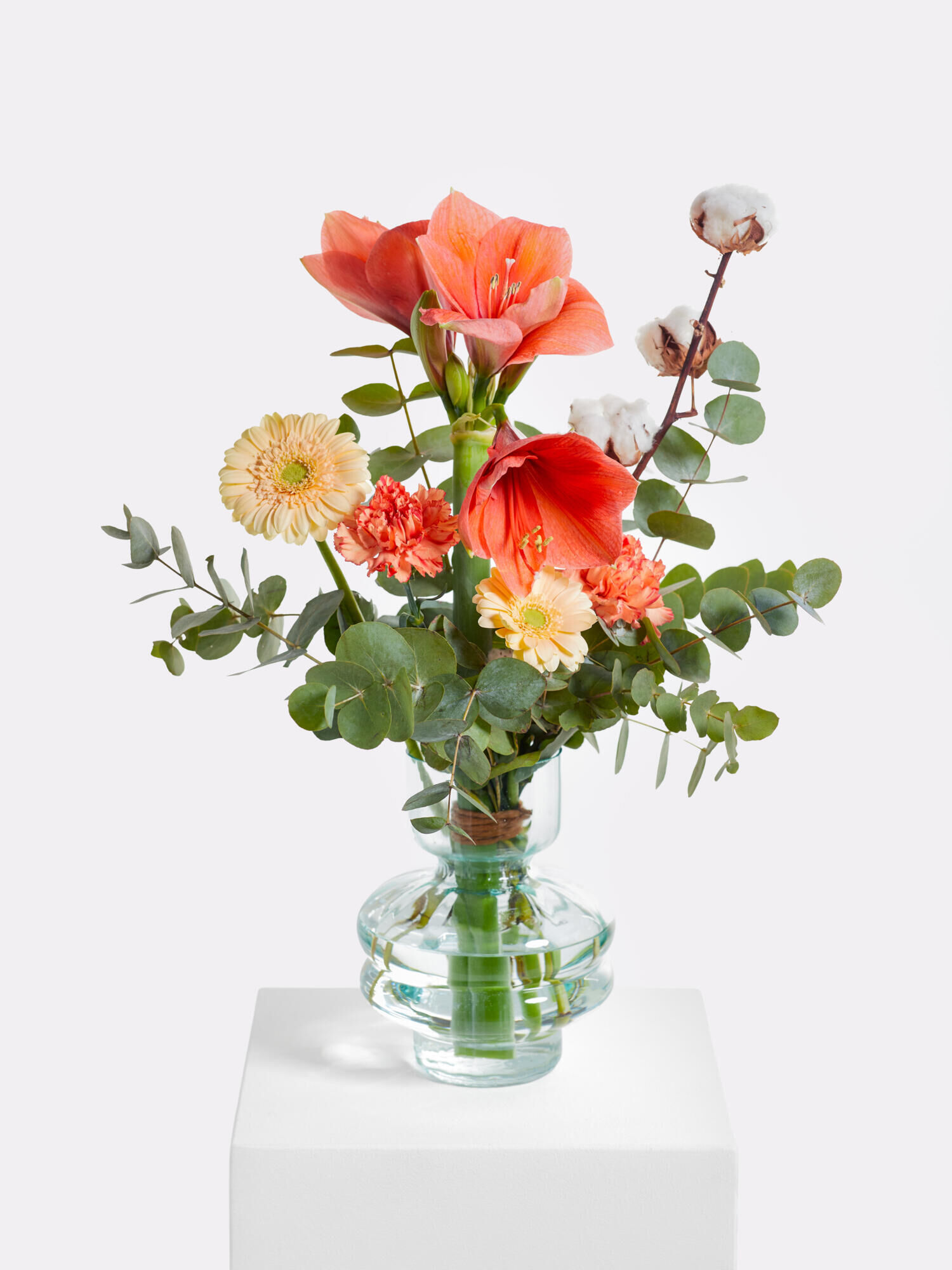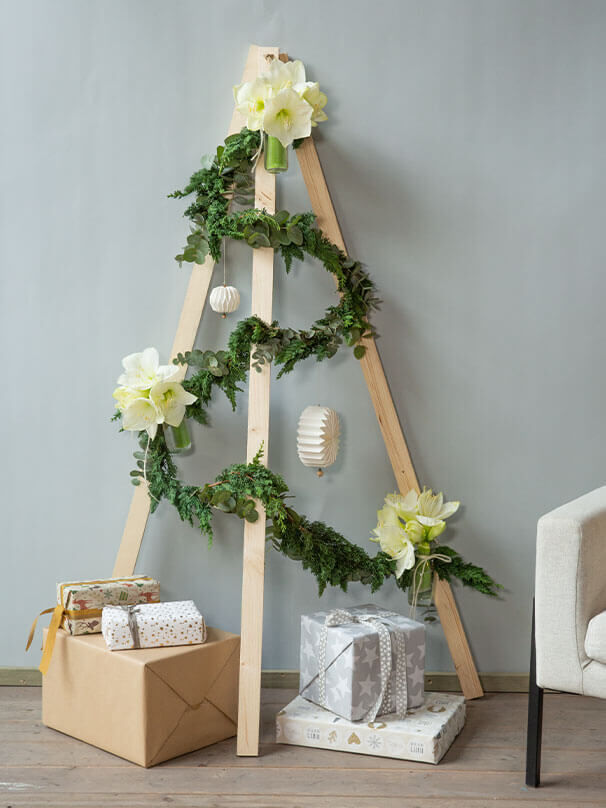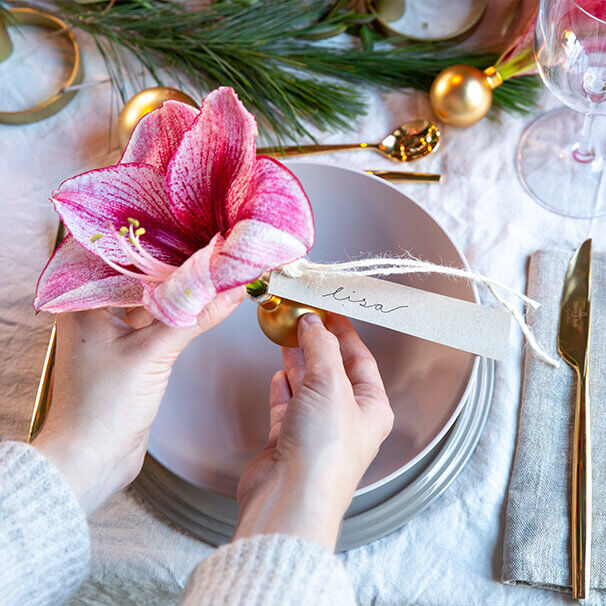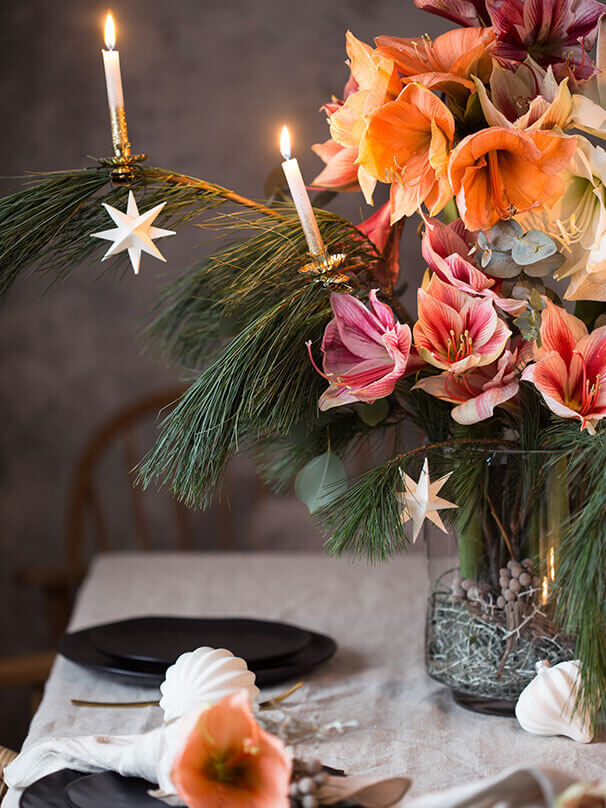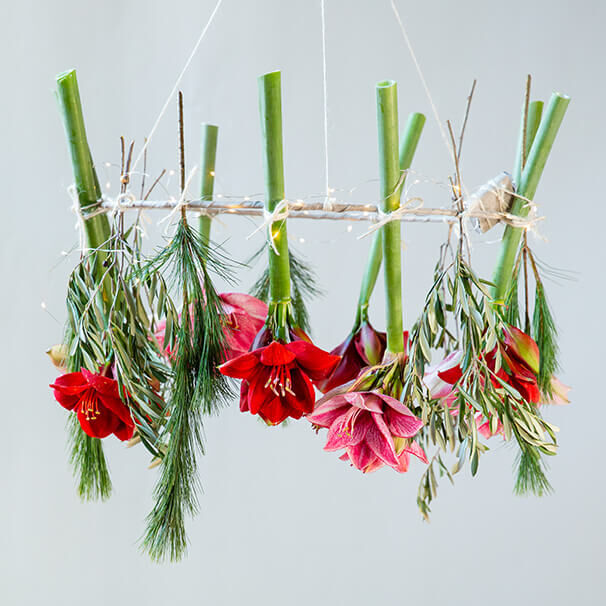Amaryllis
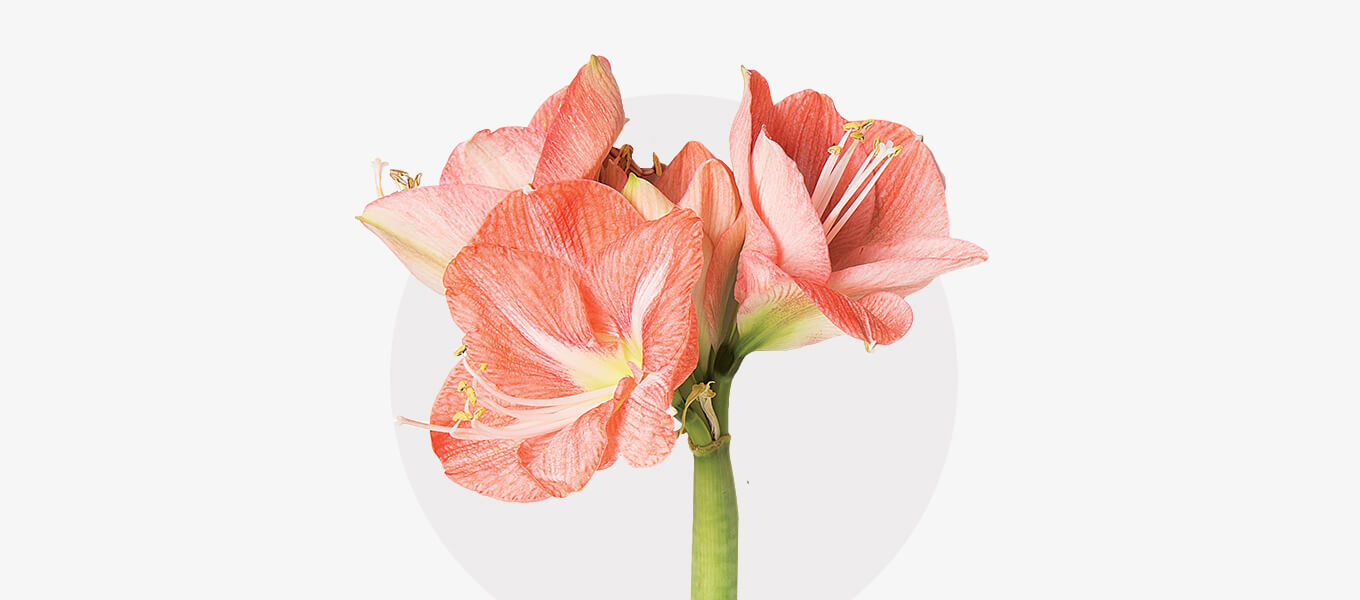
With its large, intensely coloured flowers, the amaryllis brightens up the gloomy winter. As a pot plant and cut flower, it is particularly popular during Advent and Christmas. This fact sheet provides the knowledge required to care for the amaryllis correctly.
The name of the bulbous flower is derived from the Greek amarussein and can be translated as sparkling or radiant. According to today's botanical classification, the amaryllis belongs to the genus Hippeastrum. The name refers not only to the plant's radiant flowering power, but also to the matching star-shaped flowers.
The origin
The amaryllis is native to the subtropical regions of South America, preferably the Peruvian Andes and southern and central Brazil. It is a tropical beauty and is not used to different seasons, but only to constant temperatures between 18 and28 °C with dry and rainy seasons. Such information about the origin of a plant species is important in order to create the right conditions for a plant in your own home.
Amaryllis species
Around 100 species of the magnificent amaryllis are known. Whether in pots or as cut flowers, a distinction is made between large-flowered, small-flowered and cybister types. The varieties can also have single-colored, multi-colored, filled and unfilled flowers. Despite the huge selection, the classics in monochrome shades of red and white are the most popular, whether as pot or cut flowers.
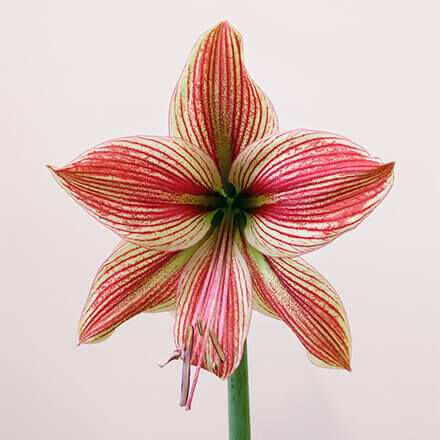
Large-flowered amaryllis
Varieties with a flower diameter of more than 16 cm are considered large-flowered. Some even reach a diameter of up to 25 cm. However, the flowers of most amaryllis varieties remain smaller than 20 cm.
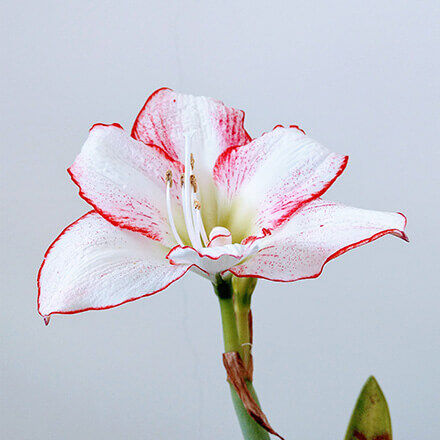
Small-flowered amaryllis
The small-flowered varieties have a flower diameter of 9 to 12 cm. They are less common. Finally, the amaryllis impresses as a pot or cut flower with its impressive large flowers.
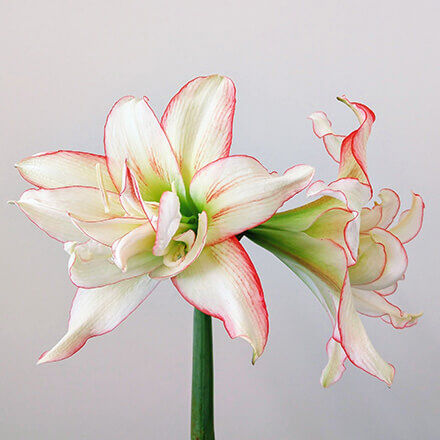
Cybister types
The flowers of this amaryllis look exotic, with narrow, thin petals in striking colors. Unlike the classic red amaryllis, they also shine in bright green-yellow colors.
Appearance and flowering time
The amaryllis is a perennial plant. It has a bulb as a survival organ. From this, an upright, leafless stem develops, at the end of which an umbel-shaped inflorescence forms. The one to eight flowers consist of six petals surrounded by two bracts. The flowers can reach a size of up to 20 cm. The bulb also produces basal, lanceolate, narrow leaves opposite each other, which can grow up to 80 cm long. The flowering splendor of the potted amaryllis can be admired indoors from mid-December throughout the winter. As a cut flower, the amaryllis blooms for up to three weeks. There is no place for the Christmas amaryllis flower in the garden during the cold season, as it wilts in the low temperatures.
With good care, the potted amaryllis will flower throughout the winter from December onwards. This means that it shows its bright flowers once a year and returns in full splendor for the next winter. As a cut flower, the amaryllis blooms only once until it withers.
After the long winter flowering period of the potted amaryllis, the flowers wither. As soon as this process begins, the wilted flowers should be removed along with the stem. Only the leaves should be left, as this is where the plant draws the nutrients it needs. In this state, the potted amaryllis can survive the summer until it is stored in newspaper in the fall and unpacked again for the flowering season.
Potted amaryllis are perennial and can flower again the following year. However, amaryllis that are covered in wax are not perennial, because once the nutrients stored in the bulb have been used up, it can no longer absorb new nutrients and dries out.
After the flowers of the potted amaryllis have withered, the flowers and the stem must be cut off. The leaves should not be removed as they serve as a source of nutrients. The plant should only be watered from below so that the bulb remains dry. It is best to provide the growing pot with a saucer and always fill the saucer with water. In September, when the plant has drawn the nutrients from the leaves back into the bulb and they have turned yellow and wilted, they are also cut off. Under no circumstances should you water your amaryllis during this phase! Then remove the bulb from the soil, wrap it in newspaper and store it in a dark and cool place. This resting phase of at least five weeks is important for the plant to flower magnificently again. The bulb is then potted up again in potting compost and provided with water. The first green tips will soon appear and begin to grow.
The potted amaryllis will start flowering again next year from December if it has been properly cared for. In keeping with the dreary time of year, it will then create a pleasant Advent and Christmas atmosphere with its bright flowers.
The amaryllis with its colorful flowers is a popular gift during the Advent and Christmas season. It is a winter bloomer, which is due to its natural habitat in the southern hemisphere. There it blooms after rather dry and cool months, which corresponds to our winter time here in the northern hemisphere. It is particularly popular as a cut flower in a vase during the winter months due to its bright flowers, which go perfectly with the wintery, Christmassy look of the lush green fir branches.
Location and the right soil
In a pot
A bright location without direct sunlight is ideal for the potted amaryllis. A saucer should also be used to prevent waterlogging. The bulb of the plant should remain dry. During the flowering period, a room temperature of 18 to 20 °C is ideal. The flowers wilt more quickly at higher temperatures.
In the vase
The same location applies for the amaryllis as a cut flower as for the pot plant. It should be in a bright spot without direct sunlight. The choice of vase should be a tall container that supports the tall stem well so that the flower, which is still developing from the buds and therefore becoming heavier, does not possibly break off.
In a glass
Only small-growing species are suitable for growing amaryllis in glass. Otherwise there is a high risk of the glass becoming unstable due to the weight of the long stem and tipping over. Make sure that the glass has a bulbous shape and a stable stand. Your florist will be happy to advise you on choosing the right variety.
Bulb in the garden
The potted amaryllis can be placed outside as soon as it gets warm. Before then, the garden is not the right place for the bulb and it cannot be planted in the flower bed during the flowering period in December, as the temperatures are too low for the tropical plant. If you still want to plant an amaryllis in the bed, you will need to use a suitable garden amaryllis.
With regard to the origin of the amaryllis, the nature of the soil there allows important conclusions to be drawn about the appropriate properties. In the Peruvian Andes, the plant thrives in permeable soil with a high proportion of mineral components. A recipe consisting of universal soil, potting soil and quartz sand comes close to this structure. The properties of the soil play an important role if the amaryllis is to be transplanted.
Planting amaryllis in the garden
The traditional winter-flowering potted amaryllis cannot be planted in the garden. The cold temperatures do not meet the plant's requirements. It only blooms as a houseplant in a pot or as a cut flower. However, it is possible for a garden amaryllis to enchant the flowerbed with its summer blooms from July to September. The hook lily, for example, is an impressive outdoor variant of the amaryllis. It blooms from the warm summer until the golden fall.
The right time to plant garden amaryllis is in spring. Once the ground has thawed in March or April, the bulbs can be planted in the ground. The garden amaryllis should be planted by the end of May at the latest. They start flowering in July and continue until September. They love a sunny spot and sandy to loamy soil.
You cannot plant an amaryllis with a wax coating. The wax coating ensures that the bulb does not dry out and that the nutrients are stored. However, the water supply in the bulb only lasts until the magnificent flowers open, after which the plant dries out. The wax layer has the advantage that the amaryllis is self-sufficient and does not need to be watered. However, its lifespan is short.
As soon as the temperatures get warmer and there is no longer any threat of frost, the plant can be moved outside to a sheltered spot. There it can overwinter. The warmer the location, the better. Avoid direct sunlight as this will burn the amaryllis foliage.
Talking about overwintering is actually misleading, as the faded potted amaryllis has to be brought through the summer! Once the amaryllis flowers have faded, they are cut off together with the stem, leaving the leaves intact to provide nutrients. From spring to late summer, the plant needs water, but from below through a saucer, and a semi-shady, warm spot. In the fall, the bulb is wrapped in newspaper and stored in a cool place until it can start flowering again in winter.
Care tips for amaryllis
At the beginning of the flowering period, it is sufficient to keep the soil of the potted amaryllis just moist; then slowly increase the dosage until the plant has reached a height of about 10 cm. Now water once a week. The cut-flower amaryllis also needs new water. The water in the vase should be replaced with fresh water every three days.
After the flowers of the potted amaryllis have withered, cut off the bottom of the inflorescence with a sharp knife. The leaves are only removed once the plant has dried out in late summer.
When the flower begins to wilt, the potted amaryllis should be fertilised for the first time, then every three to four weeks. The best fertiliser is a liquid flowering plant fertiliser that is applied with the water.
To do this, use secateurs to cut the plant just above the soil. The undamaged bulb can now be planted in a new pot with potting soil. When planting, half of the amaryllis bulb should be sticking out of the soil. For better planting conditions, the soil can be mixed with a little bit of potting compost.
Amaryllis can be propagated using so-called bulb cuttings. This is how it works:
- Do not allow the bulbs to sprout, but continue to store them at lower temperatures until January.
- Remove the roots and lightly cut the base of the bulb.
- Cut the onion vertically into 12 to 16 onion wedges of equal size.
- Cut the onion wedges in half or thirds again, also vertically.
- Place the onion pieces in sand in the direction of growth.
- Ensure an optimum temperature of 20 to 25 °C.
- Root formation takes place after a few weeks, bulb formation after a quarter of a year.
- Transplant and uproot in the second autumn and use for flowering.
Growth phase: The potted amaryllis grows from March to August. It then needs water, but only from below through a saucer, and a semi-shady, warm location.
Dormancy phase: From September, the plant withdraws into the bulb for its winter dormancy in order to gather strength for a beautiful bloom. The bulb does not need water here, but should be stored in newspaper in a cool place.
Flowering phase: From November, the amaryllis slowly awakens from its autumn dormancy. About 6-8 weeks later, the first magnificent flowers open. A bright location and temperatures up to a maximum of 20 °C are ideal.
The amaryllis will last for up to three weeks, provided you pay attention to a few points when caring for the cut flower. A clean vase and fresh water every three days are essential. In addition, the stem of the amaryllis tends to curl up at the lower end. This makes it more difficult to absorb water and the tissue softens more quickly. It is therefore advisable to stick adhesive tape around the lower end of the stem.
No, it does not need water because the wax layer prevents the bulb from drying out. All the nutrients that the bulb needs are stored in it. However, after flowering once, the bulb dies because the supply is no longer sufficient.
No, the amaryllis flower is not suitable for drying due to its high moisture content and fleshy consistency. All types of straw flowers are particularly suitable for drying. Flowers that naturally have or need little moisture are easy to dry.
How can you water amaryllis hanging upside down? If you want to decorate with amaryllis, you can hang the cut amaryllis upside down with a ribbon, for example on a garland. To supply the plant with the water it needs, simply pour the water into the hollow stem. The plant draws the water into its vascular system via its cuticle, the outer skin of the stem.















